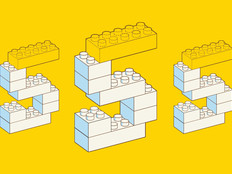Colleges Invest in Network Upgrades to Meet Growing Tech Demands
Vic Jabrassian, director of IT at the Southern California Institute of Architecture in Los Angeles, knew the time had come: All the warning signs for a network upgrade were glaringly apparent at the college better known as SCI-Arc.
Data transfers were slow, and as students, faculty and staff brought more wireless devices to campus, the 10-year-old network lacked the coverage the college needed, Jabrassian says. Complaints piled up.
"Students and faculty continued to ask why the network was so slow, and they had trouble streaming video," Jabrassian says. "We also had more demands for increased network performance from the administrative side."
By spring 2012, the stage was set for SCI-Arc to upgrade its network. With administration support, Jabrassian contacted CDW•G, and by the fourth quarter of 2012, the solution architects there told him that Cisco Systems could offer some aggressive pricing because it was nearing the quarter's end.
"I was cautious about Cisco at first because the perception is that they're expensive," Jabrassian says.
SCI-Arc revamped its network with Cisco gear from top to bottom — including switches, wireless controllers and cabling — for less than officials had anticipated. The college deployed multiple Cisco Catalyst 4500 Series switches with a Cisco 2500 Series wireless controller. Jabrassian and his three-person IT staff also rolled out 19 Cisco Aironet 3600 Series access points and installed a 20 gigabit-per-second fiber connection that links the core router to the distribution switches. WAN bandwidth started at 45 megabit-per-second T3 levels, and the plan is to move to a 100Mbps metropolitan area network in the months ahead.
SCI-Arc was ready to flip the switch on the new network by the time students returned to campus in January — and with the college celebrating its 40th anniversary in April, the timing couldn't have been better. A corresponding benefit dinner raised $400,000 and featured a multimedia presentation of the college's most dynamic projects.
"Having the network ready for the anniversary was really important," Jabrassian says. "And now we are able to do so much more with video. We now have a searchable database of all our lectures that's open to the public. Students and faculty can also collaborate in ways that they couldn't before."
The Network Needs an Upgrade
At the University of Maryland, College Park, Deputy CIO and Executive Director for Networks and Communication Technologies Tripti Sinha says that as IT staff watched the technology rapidly evolve, it became clear that the network serving Maryland's 50,000 users would need an upgrade.
"Technology is pervasive in everything we do," Sinha says. "It is an enabler of teaching, learning and research, and with all the mobile devices people use today, we knew we had to ensure that the network was sufficiently robust."
The number of intermediate distribution frames (IDFs) SCI-Arc runs across its backbone network; the IDFs run through a single main distribution frame (MDF)
Maryland converged data, telephony and video networks over Cisco switching and routing and an Avaya voice platform, working logically and effectively on every aspect of the network, Sinha says. That included laying down fiber, expanding the wireless network, upgrading the data centers, and rolling out switches and routers throughout the university's nearly 300 buildings. So far, roughly 45 Nexus routers and switches have been installed and almost 400 Cisco Catalyst 4500E Series and 3560 Series switches have been rolled out. More than 8,000 VoIP phones have been deployed, 57,000 data jacks have been refreshed and 4,500 wireless access points have been installed.
"We now have the infrastructure for students to bring their own devices. If you have a University of Maryland credential, you can have access to the network; visitors without credentials get guest access," Sinha says.
The university also supports eduroam — a secure international roaming service available to participating institutions — which allows students, faculty and researchers from other institutions to gain access to the Maryland network.
"I look at eduroam as a higher level of secure guest access," Sinha says. "It's also a great service for faculty visiting or doing research at other colleges."
The Rare Opportunity to "Rip and Replace"
At Adelphi University in Garden City, N.Y., the IT staff knew it was time for an upgrade when Cisco sent word that, by November 2012, its Nexus 6500 chassis would no longer be supported.
"We're expected to deliver close to 100 percent uptime, so upgrading our network was based on need," says Fred Hicks, director of networking services.
Along with installing two Cisco Nexus 7000 core routers in two separate buildings, Adelphi also upgraded its Internet bandwidth over a period of 18 months, from 200Mbps to 500Mbps across three Internet service providers. "With one, we also made it a point to run the traffic over IPv6," says Dennis Bohn, Adelphi's manager of network systems. "There's less congestion over IPv6, and it gives us a better bandwidth path over the Internet."
There are many reasons why higher ed IT departments seek to refresh their networks. More often than not, it's a combination of circumstances that moves an upgrade. Still, while networking gear typically is replaced every three to five years, a full "rip and replace" is rare. SCI-Arc's Jabrassian advises that if such an approach is suggested, IT teams should take advantage of the opportunity: "You only get one shot to do a full upgrade, and a very short time to execute. Once I saw all of the complaints and realized I had the support of the administration, I knew this was our chance."
Striving by Design
The Southern California Institute of Architecture in Los Angeles was founded in 1972. By the late 1990s, SCI-Arc had taken over a quarter-mile-long, 100-year-old building in downtown Los Angeles that used to be a freight depot — more urban avant-garde than a typical sprawling campus.
"I would like to see us do a lot more with video and animation," says Eric Owen Moss, SCI-Arc's director. "I want people using animation to reinterpret their designs for spaces in buildings the way a person would walk through a room versus using a fixed drawing. We need our students to think wide rather than narrow."








